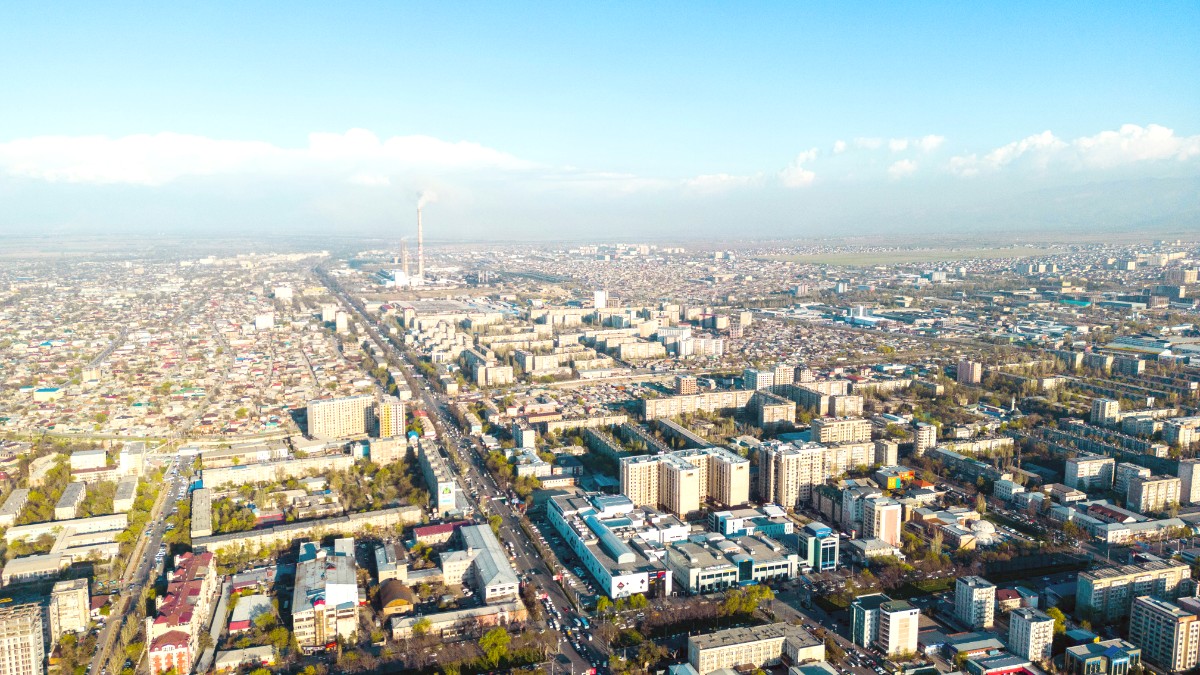
Kyrgyzstan
Kyrgyz cuisine has deep roots in the nomadic traditions of Central Asia. Food was practical, calorie-rich, and easy to prepare on the move. This legacy means reliance on meat (lamb, beef, horse meat), dairy products (mares, cows, sheep), and transportable grains.
The Silk Road brought various culinary influences. Uzbek cuisine contributed dishes like plov, while Dungan (Chinese Muslims) and Uighur populations introduced unique noodle dishes like laghman and ashlyan-fu. Russian influence appears in salads, soups (like borscht), and bread.
Lamb, beef, and horse meat are staple proteins. Chicken is also consumed. Meat is often boiled, stewed, or grilled (shashlyk). Mare's milk (kymyz), fermented cow's milk (ayran), and various cheeses (like salty kurut) are common.
Wheat is extensively used for noodles (laghman), dumplings (manti), and various types of bread (naan, boorsok). Rice is central for plov. Onions, carrots, potatoes, cabbage, radishes, tomatoes, and cucumbers appear frequently, often in stews or salads.
Cumin, black pepper, red pepper, garlic, dill, and cilantro are common seasonings, with savory and fresh flavors. Meals are often savory, rich from meat and fat. Fresh herbs add brightness. Soups and stews are a significant part of the diet.
The national dish, name means 'five fingers,' referring to traditional hand-eating. It consists of boiled meat (lamb or horse meat) over thin pasta sheets, seasoned with onion broth and fresh herbs.
Where to find: Traditional Kyrgyz restaurants, often outside the immediate city center.
A staple across Central Asia. Rice cooked with carrots, onions, and meat (lamb or beef), often with garlic and chickpeas, simmered in a large kazan. Flavors are rich and savory.
Where to find: Many local cafes. Cafe Faiza is famous for excellent plov.
Thick, hand-pulled noodles with a meat (beef or lamb) and vegetable stir-fry. Served as a savory soup (guiru-laghman) or stir-fried (boso-laghman). Popular due to Dungan and Uighur influences.
Where to find: Widely available in Dungan and Uighur cafes and many mid-range local restaurants.
Samsa: A must-try street food. Shawarma (Doner Kebab): A popular fast food. Kurdaan: Small fried pastries with savory meat fillings.
Kymyz: Fermented mare's milk, sour and slightly alcoholic. Maksym: Non-alcoholic fermented grain drink, refreshing in summer. Bozo: Fermented millet drink, low alcohol, for winter. Ayran: Salty yogurt drink, refreshing.
Upscale restaurants offer international cuisine and modern interpretations of local dishes, ideal for special evenings.
Numerous options balance quality food, comfortable ambiance, and reasonable prices. Many serve Kyrgyz, Russian, Uzbek, Uighur, Dungan, and European cuisines.
Stolovayas (Canteens): Inexpensive, cafeteria-style meals. Good for a quick, cheap, and hearty lunch.
A cultural experience in itself. A sprawling, bustling market offering a sensory overload of sights, sounds, and smells. An authentic glimpse into local commerce and daily life. An essential visit for cultural immersion.
Look for fresh produce, spices, dried fruits, nuts, meats, dairy products, textiles, clothing, household goods, and electronics.
Another large market, mainly for food (fresh produce, meat, dairy) and everyday household goods. It provides a less touristy but equally authentic shopping experience.
Pizzerias are popular.
Kebabs, doner.
Various Chinese restaurants.
Dedicated Indian restaurants.
Kyrgyzstan is a predominantly Muslim country, so most meat served in local eateries and markets is halal. For strict adherence, confirmation with the establishment is wise.
Kosher options are extremely limited in Bishkek. Travelers needing strict kosher food may need to self-cater using imported or specially sourced ingredients.
Communicating specific dietary restrictions can be a hurdle. Prepare phrases in Russian or use translation apps.
Stick to simpler dishes with fewer ingredients if unsure. Buffet-style meals might offer more visibility into ingredients. If an ingredient is unclear, it is better to avoid it.
Local tour operators or guesthouses can arrange workshops on traditional Kyrgyz felt-making. You can learn ancient techniques for crafting items like shyrdaks (felt rugs), ala-kiyiz (felt carpets), kalpak (felt hats), slippers, or small bags.
Learn to prepare traditional Kyrgyz dishes like Plov (paloo) or Laghman. Classes often include a visit to a local market to select ingredients, followed by hands-on cooking and a shared meal.
Guided food tours often visit Osh Bazaar and various local eateries. You can sample various dishes, learn about local ingredients, and understand the cultural significance of the food.
Novruz (March 21): The Persian New Year, widely celebrated with traditional foods, games (kok-boru), and cultural performances. Independence Day (August 31): A national holiday with celebrations, parades, and cultural events. World Nomad Games: Not held in Bishkek, this major cultural event occurs every two years (check schedule). Showcases traditional nomadic sports and culture. Check local listings upon arrival.
Engage respectfully with locals. A smile and a few words of Russian or Kyrgyz are appreciated. Visit local markets for everyday life observation. Accept invitations for tea or simple meals if offered. Be open to unexpected conversations.
Sometimes hosts performances of the Manas epic narration, an UNESCO-recognized intangible cultural heritage. The Manas epic is the longest oral epic in the world.
Inquire about live performances. Read about the epic before your visit. Its themes of unity and heroism are central to Kyrgyz identity.
The epic is a cornerstone of Kyrgyz national identity, representing history, values, and traditions. Experiencing a part of it offers deep cultural insight.
Do not miss the opportunity to try freshly baked bread and the various types of tea, which are central to Kyrgyz meals.